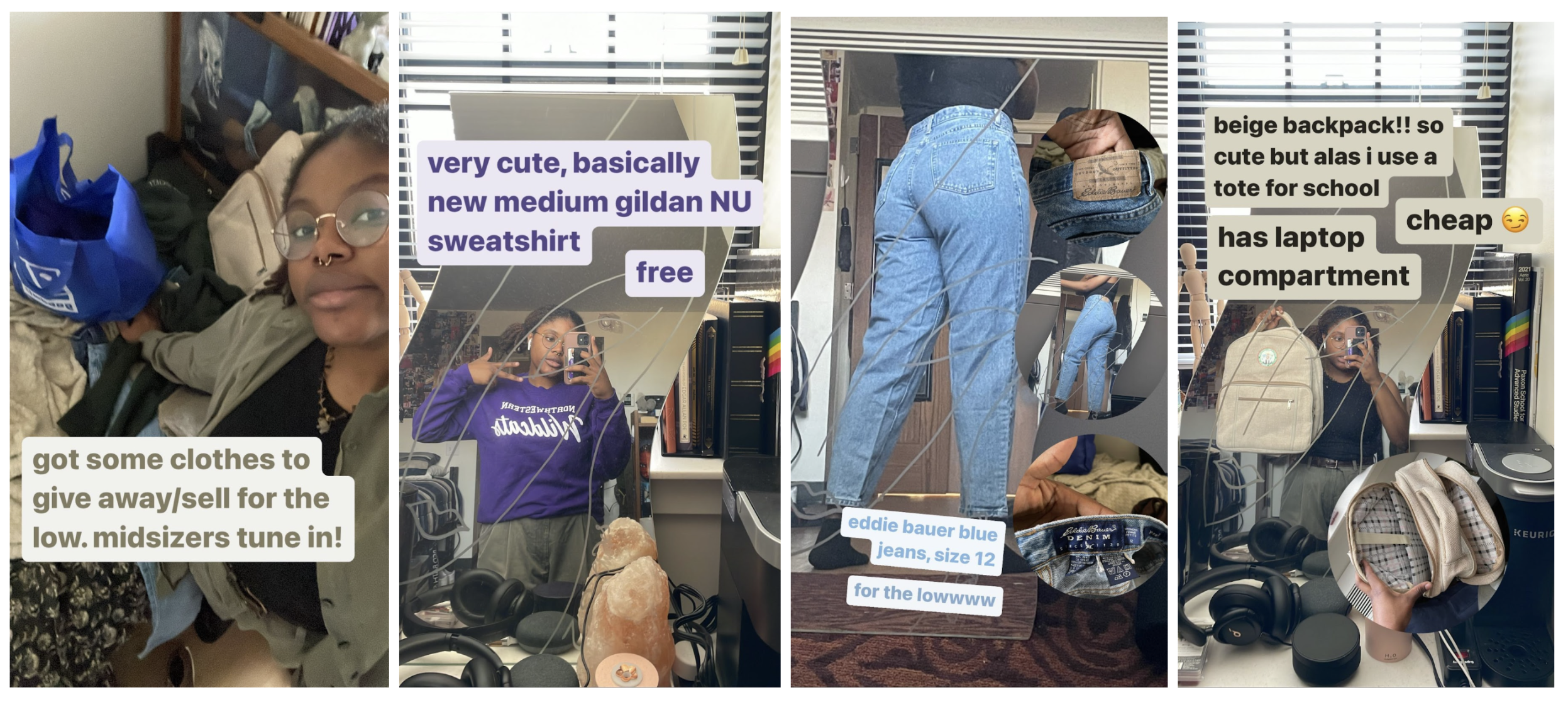There’s a monster under my bed…one in my closet…and one on that chair in the corner of my dorm. I call these monsters ~the Heap~ and they’ve been haunting me for months now. I know I shouldn’t, but I can’t stop feeding them! Oh…did I mention that they eat clothes?
Everyone has a pile of unwanted clothes in their closet (or their chair) that they have no clue what to do with. Considering the ever growing crisis of clothing waste brought on by fast fashion and rotating trends, throwing away clothes feels like a direct contribution to the planet's impending doom. Here’s a hero’s guide to conquering these unwanted clothes in your closet.
To show the efficacy of this guide, I'll be modeling out the process by doing it myself. First, I took a pile of clothes from the back of my closet – all thrown nicely into an old Goodwill tote – and wrote down a short description of each item. I checked off clothes that I had either sold, given away or reimagined. Here’s all that I started out with:
The Heap:
- Red pair of Converse
- Beige pair of Vans
- Green sweater
- Northwestern sweatshirt
- Denim jacket
- Mock neck white sweater
- Beige backpack
- Cowboy-esque two-piece vest and slacks set
- Corduroy pants
- Light wash blue jeans
- Dark wash blue jeans
First things first, wash! I recommend doing a laundry load with all of your items before setting them out to sell, trade or donate. It’s not only a nice thing to do, but it increases your chances of getting your items picked up at trading stores.
First stop: Crossroads – selling/trading your clothes at trading stores
After giving the Heap a quick wash, I set out to Crossroads Trading, a thrift store in downtown Evanston, to try my luck. Trading stores like Plato’s Closet, Buffalo Exchange and local thrift trade shops will evaluate all the items you bring to sell and offer you either store credit or cash for the items. I talked to Mika Hartmann, an employee at Crossroads Trading, to ask about their tips for getting your items accepted.
“Pay attention to our style guides! We have them posted on our website and physical copies in our stores,” Hartmann said. “Those will show you which styles and brands we’re looking out for. Other than that, just make sure to give your clothes a wash and to bring everything with you. By volume, you’ll be able to get more accepted.”
My Crossroads trip seemed to be a bit unlucky, as they only took two of my items. I sold them my Converse and Vans, and they gave me 24 dollars in store credit for both. Not too bad!
Pause: re-evaluate (between each stop)
Between each stop on this journey, I suggest looking over your Heap to make sure you’re ready to part with all of your items. Some clothes may have seemed unwanted at first, but you might just start imagining some new uses.
Next stop: social media sale – posting, trading or selling your clothes on Instagram (or other apps)
This stop, unfortunately, is the most “labor-intensive” part of the journey. You can post your clothes for online audiences using apps such as Instagram, Depop, Poshmark or any other social media sites. I modeled and took pictures of my remaining items, giving prices (or no price!) to my clothes, based on how much I thought they were worth — taking into account original price, quality, wear, etc.
I’ve included some of my Insta story listings here as examples on how to sell, but I suggest getting creative! You have to make your unwanted clothes look as appealing as possible. Sell, sell, sell! I suggest using an easy set-up to take pics (i.e. mirror selfies) and taking detailed photos of your items, including tags, sizes, and yes, even stains. Don’t try to make them into something they aren’t, and make sure to list imperfections with items.

My Insta sale was very successful – I ended up selling and giving away seven items!
Selling clothes directly to people is one of the most sure-fire ways to make sure your clothes end up in loving hands.
“I was really surprised at how low the prices were! I have a feeling they’ll be a piece that I’ll be reaching for and wearing quite often,” said second-year Medill student Anita Li after trying on a pair of jeans she bought from me.
Pause: re-evaluate again!
After taking pictures of my clothes, I changed my mind about giving away the last two items of my Heap. My white mock-neck and dark wash blue jeans that I previously did not want proved to be very useful styling pieces for the winter, so I decided to add them back into my closet.
Last stop: donate, donate, donate!
Donating the last of the Heap is the easiest way to get rid of the remaining items that otherwise would have gone unused. Though none of my items made it to this stage of my journey, it’s still the most convenient way to make your Heap disappear.
Luckily for Northwestern students, the organization NU Thrift Store (NUTS) provides an easy way for students to donate items to their pop-up campus thrift stores at a standardized price of $2. They provide donation bins at residential colleges and common campus sites where you can simply drop off clothing. The two main goals of the organization are “promoting sustainability and also helping out first-gen, low-income students,”according to one of its founders and now Northwestern alum, Melissa Batz.
Other options for donations are Goodwill donation centers, the Salvation Army, Village Discount Outlet stores or any local thrift shops in your area.
Final results:
I started with a hefty bag of unwanted clothing and ended up with nothing. Using these steps, you can end your journey with a cleaner closet and maybe some extra cash if you’re lucky!